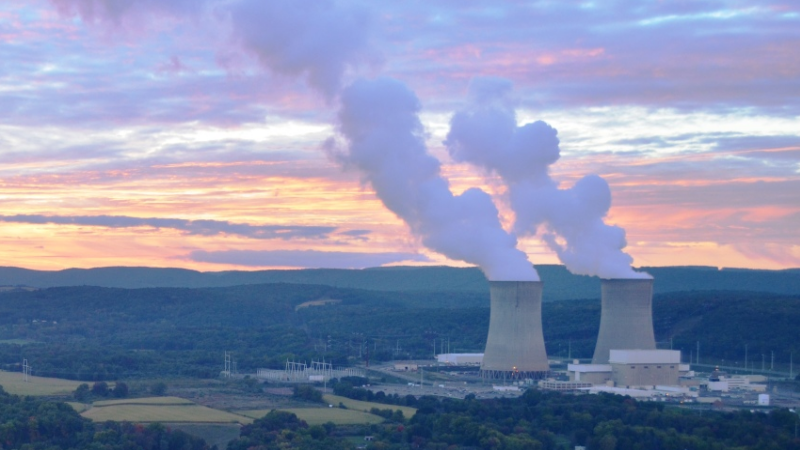Investors will have noticed the rapid appreciation of Talen Energy’s bond prices in recent weeks after weaker performance in the first half of 2017

FROM THE SALES DESK
There are some prospects for material positives for the company, however there is also regulation changes pending, which have the capacity to support bond prices or substantially weaken them if they do not materialise. The company is highly levered and its high fixed cost base gives rise to issues in low price environments within a freely competitive market.
Investors not comfortable with the company’s ongoing profile should therefore look at the current price as an opportunity to exit with positive returns. All investors should take the opportunity to ensure their exposure to the name is reflective of the non investment grade nature of the bond (<10% portfolio exposure to the company).
Investors looking to reduce/exit their positions and maintain an allocation to USD bonds in the energy sector could consider the value we see in the offshore oil sector. Please contact your FIIG relationship manager to discuss.

Source: FIIG Securities
Figure 1
What has driven the price?
1. Record warm winter
Talen reported disappointing 1Q17 earnings after a record warm winter that drastically reduced energy demand. This, coupled with Talen’s high fixed cost base with a majority weighting to coal and nuclear assets, led to rapidly declining profitability, a deteriorating credit profile and lower bond prices.
Cheap natural gas from the shale boom was the primary culprit of Talen’s weakness over the last few years as it fuelled a generation of much more efficient competitors to coal and nuclear plants.

Source: The Wall Street Journal
Figure 2
2. Possibility of favourable intervention
The Trump administration and The Department of Energy (DOE) has mandated the Federal Energy Regulatory Commission (FERC) to consider new rules that would raise power prices to pay more to plants that are considered more resilient. The DOE suggests nuclear and coal fired plants as potential recipients, and charges the FERC with tweaking electricity markets to reward these producers. These producers are seen to be able to run uninterrupted through extreme weather, disasters or other emergencies. Under the proposal, eligible plants would get paid enough to cover their costs plus a ‘fair return on equity’ whenever they run, even though they sell into competitive markets.
The letter from the DOE Secretary Rick Perry, which was delivered at the same time as blackouts were seen in Florida and Texas, discusses grid reliability as the driver of these reforms. In particular, Secretary Perry cited the polar vortex of early 2014 when the Pennsylvania, Jersey and Maryland (PJM) region relied on coal plants when gas plants could not perform. A majority of the coal and nuclear assets that were, at the time, scheduled for retirement, were called upon to meet demand during this extreme weather event.
This type of intervention is rare from the DOE (last seen in 1979) and the FERC is under no obligation to make the proposed changes – only to consider them. As a first step, the DOE looks to avoid the premature retirements of these producers to ensure grid reliability. Thus far, two states have passed new laws that effectively subsidise nuclear power while other states are considering similar measures and grid operators are pursuing changes to how the price of power is set.
The PJM region is the largest grid operator which makes up the majority of Talen Energy’s operations. They have proposed multiple methods of pricing support – most importantly the proposal of having inflexible (coal and nuclear) plants set the price of power instead of the marginal unit to turn on (usually natural gas producer).
The proposed support would set payments to eligible power plants to cover costs and get a reasonable return on equity – this effectively puts coal and nuclear power plants as the equivalent to regulated plants in deregulated markets – profits guaranteed but limited by regulators.
What does this mean for Talen and the bonds?
Covered costs and a guaranteed profit drastically improve the credit profile of Talen Energy. The possibility of an improving credit profile has already contributed to an increased capital price. If this scenario were to materialise, the price would likely continue its strong performance. The outcome on this is not clear; Talen’s energy production makes up an important part of the PJM production and the company is likely to be the largest beneficiary if the proposed regulation is passed.
Current yield to worst for the 2022 bond is 9.3%pa and the 2025 bond is 9.4%pa.
Note: Please call your local dealer for more information
Yields are accurate as at 31 October 2017 but subject to change
Note: The above article was not written by the FIIG Research team. Additionally, FIIG Research does not assess these companies. We are assisted by independent third party research, to increase the number of bonds we make available. Companies and bonds need to meet certain qualifications before we issue them in small parcels. For more information please see the new DirectBond process for non Australian dollar high yield bonds